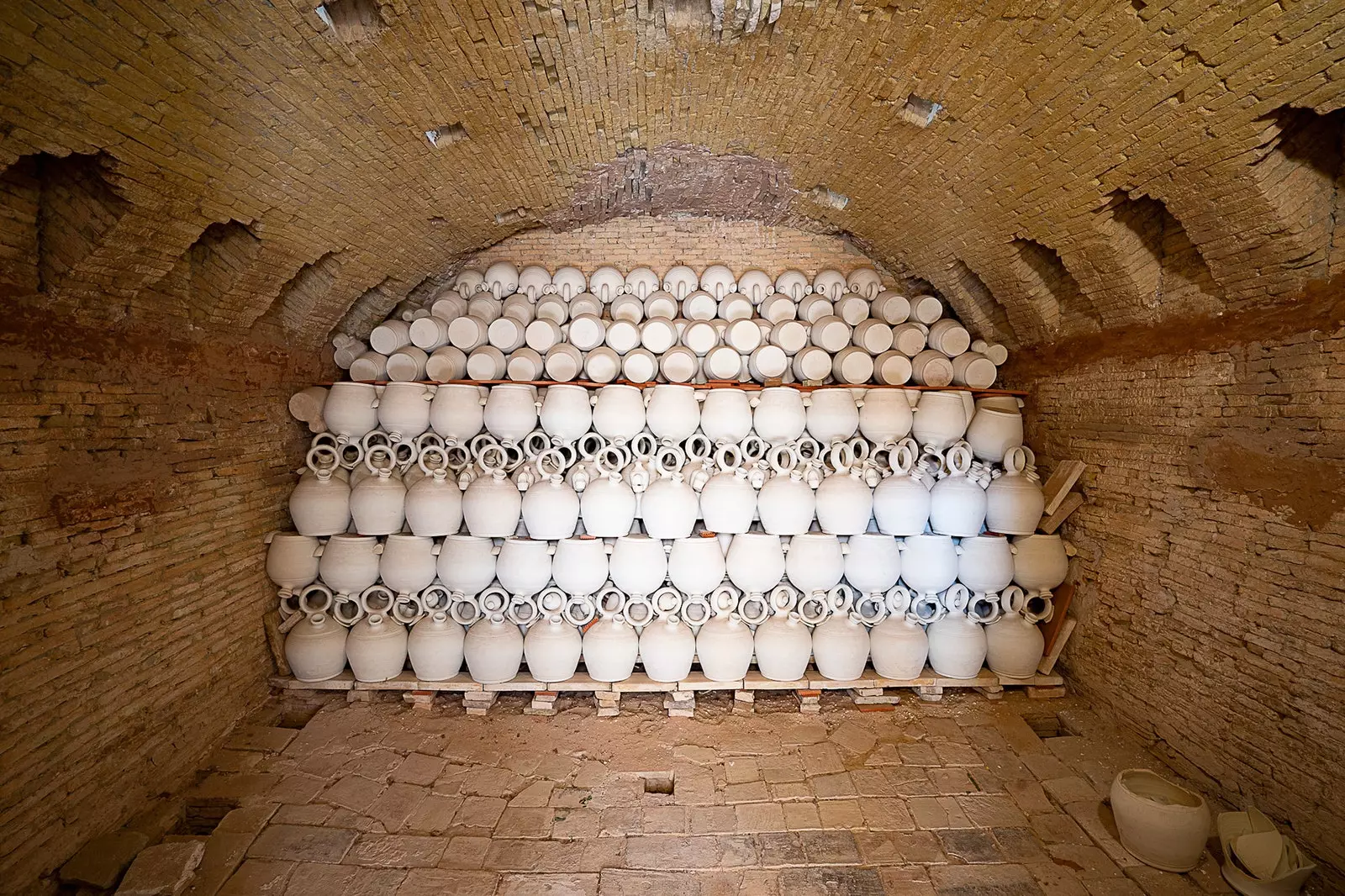
The potter town (and unknown) of Alicante
It was any summer in the 90s. My grandmother and I went downstairs with baskets of clothes to the laundry to rub for hours. Months later, she would begin to lose her memories but there, in a corner of that laundry room, the marks of history remained to remind us of the past.
The marks of the old pitchers carried by women linked to the sun and the earth like her, like that grandmother whose grandson was not worried about knowing that dozens of potters lived on her street but for playing hide and seek with her friends on the rooftops.
Twenty years later, one returns to Agost, a town in the province of Alicante blessed by the mountains of El Cid and El Ventós, the open skies of Levante and a silence only interrupted by the sounds of a distant workshop.
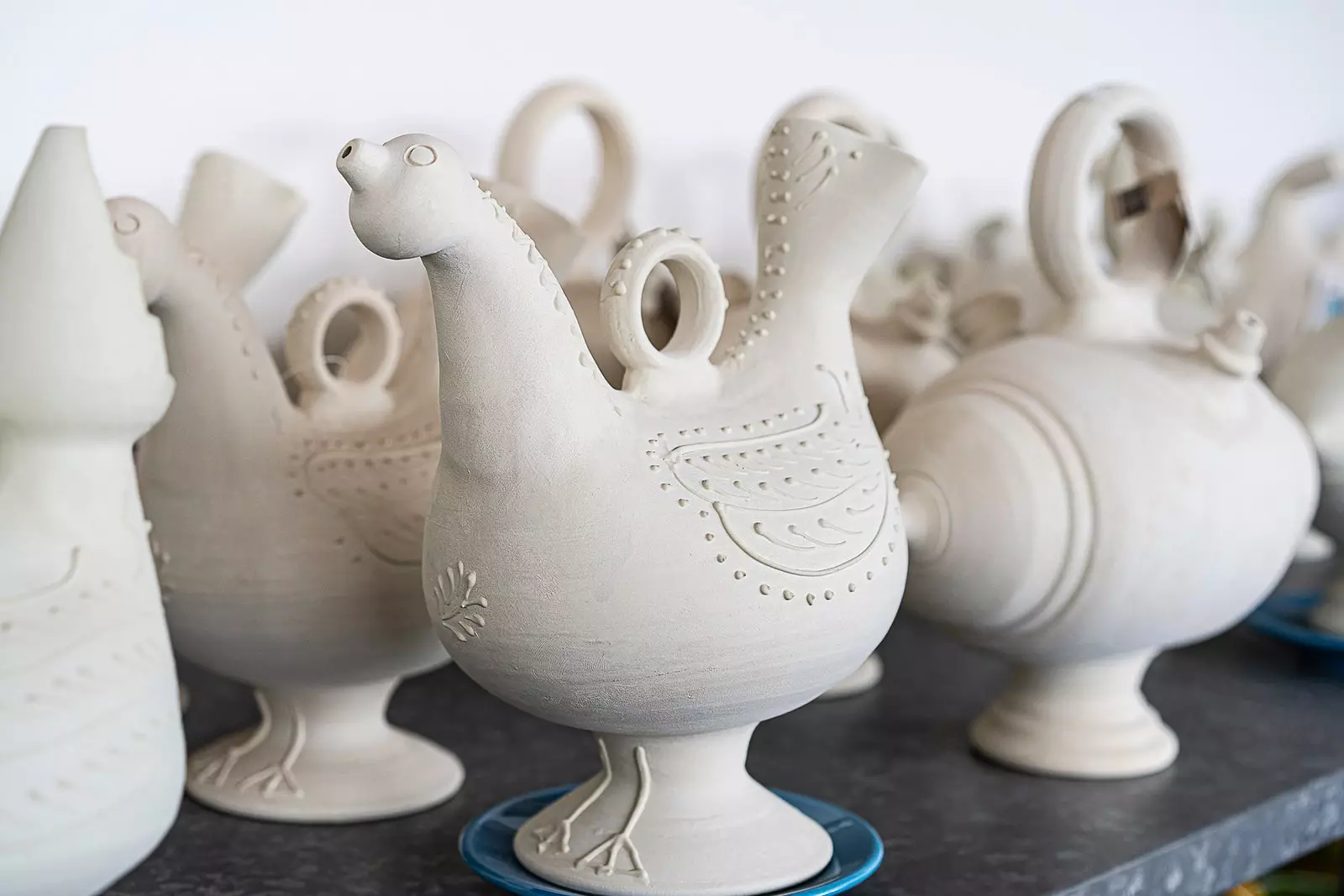
The town of Agost is known for its pottery, jugs, pitchers and many other pieces made from white clay.
Until 40 potters They have come to live in the artisan neighborhood of this Alicante town since the mid-19th century. In 2001, up to 12 artists lived together and today four survive with the mission of making the work of so many generations last through a constant reinvention and a slow lifestyle, purely Mediterranean.
ODE TO BOTIJO
The town of Agost is known for its pottery, the jugs, the pitchers and many other pieces born from white clay how well it cools the water. Despite the first references documenting the presence of Agost pottery in the thirteenth century, the activity had a special boom from the second half of the 19th century, moment in which the ceramic completely reinvented the lives of its inhabitants and the railway allowed to export its vessels to destinations such as Marseille or Algeria.
An activity that in the late 1970s it would attract the German ethnologist Ilse Schütz, who, fascinated by the town's crafts, decided to promote the Pottery Museum in 1981. A private initiative that today is the best starting point to look into the history and process of making this ancient art.
In the 19th century, many potters had their own material to make their work. In parallel, other workers frequented in carts pulled by mules el Terrers dels Pobres, a communal quarry from which crude clay mixed with stones and shells was extracted (let's not forget that thousands of years ago "all this was sea") to sell it to potters.
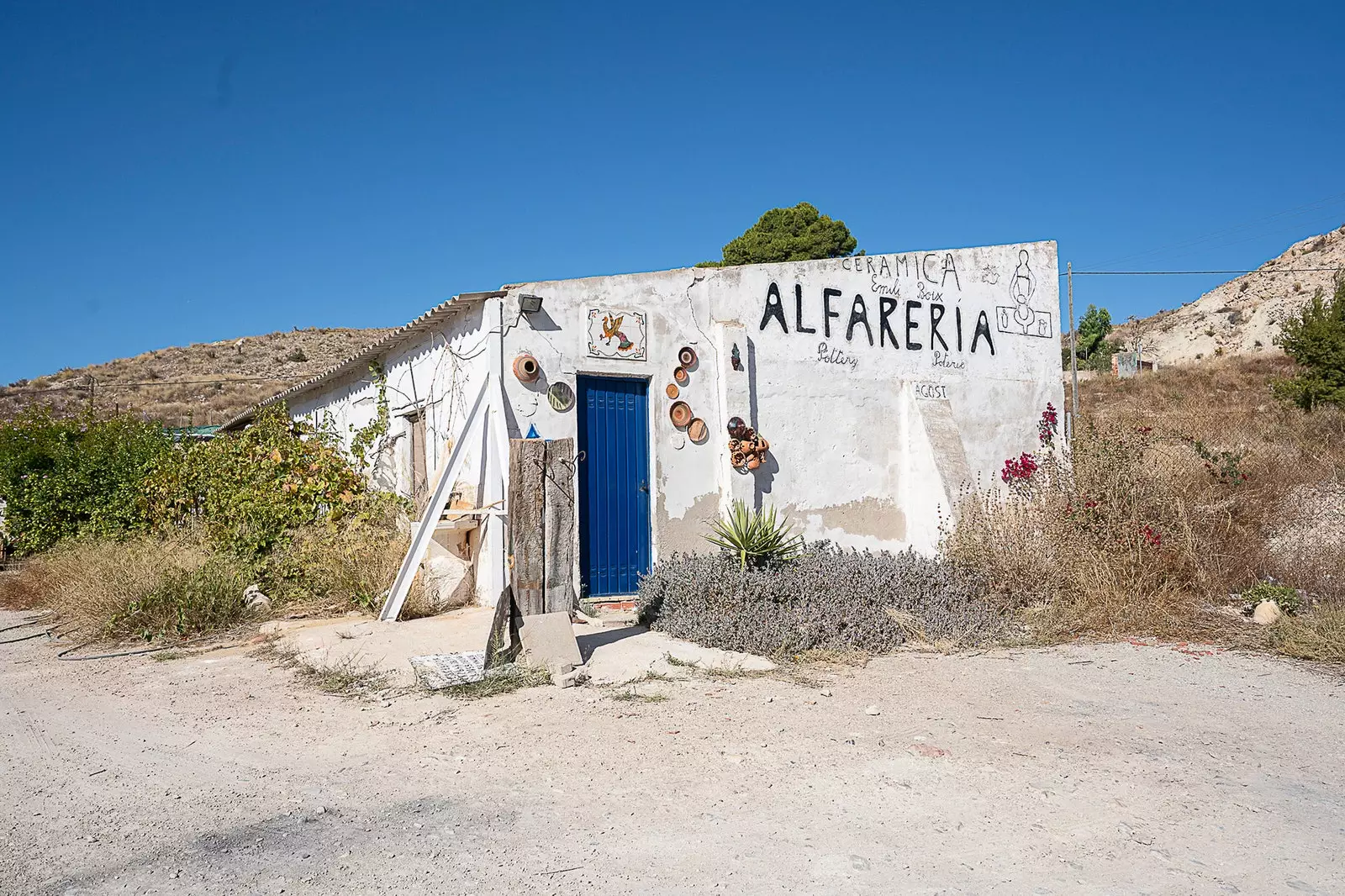
Emili Boix's pottery is a benchmark for Agost and the spearhead of five generations modeling the earth
Jose Roman, a pottery veteran, guides me to the settling ponds, or 'colaor', where the rock was turned over to mix it with water until obtaining the emulsion of a clay the color of chocolate. “It was the texture of a Danone”, Roman says. “The mixture was left to rest and dry in the sun and then divided into small squares from which the the pella, the piece of clay that the potter manipulates in the wheel room”.
The rudimentary wooden tables propelled by gears and wheels illustrate an activity for which the potters required the pawns An undervalued figure for years and who introduced the women of the village in a job that consisted of watch over all the whims of this indomitable material, from molding it on the tables to shading the spouts of the jugs.
“The jug is based on the concept of evapotranspiration, because when the sun shines on the pot, the water evaporates and cools down”, continues Jose. “The elaboration processes were expensive, because several characteristics had to be given to confirm the quality of the vessel. For example, the piece was broken to check its quality through sound and salt was added to facilitate the sweating of the jug”.
But the jugs are just the tip of the iceberg of a collection of elements focused on life in the 19th century: rabbit hutches, custom vases typical of the trousseau or vessels to preserve oil (In this case, the interior was painted with varnish to avoid the perspiration typical of the jugs that could ruin the preservation of food).
In one of the museum's rooms there are plans for a jug and pens on the tables: the new generations find in educational pottery workshops a new way of reconnecting with traditions and the proposals include initiatives such as Traces of Ceramics. A program of activities runs through the entire history of humanity with the use of ceramics as a common thread and focused on both adults and children in collaboration with the master potters of the town.
In Agost they currently live four pottery workshops with their own personality where, in addition to being able to acquire a piece, it is possible to discover in situ a trade that has become a lifestyle. there we have La Navà, National Ceramic Award 2018, whose project enfangart has become a unique initiative to offer guided tours, courses and active experiences to be a potter for a day.
Rock Martinez, Another of the potters bets on unique finishes and a refined technique based on pitfiring and its combination of its own tones that melt into the surface. For his part, José Angel Boix, from Severino Boix Pottery, advocates for innovation and experience tourism. The room in contention is Emily Boix, referent of Agost and spearhead of five generations modeling the earth.
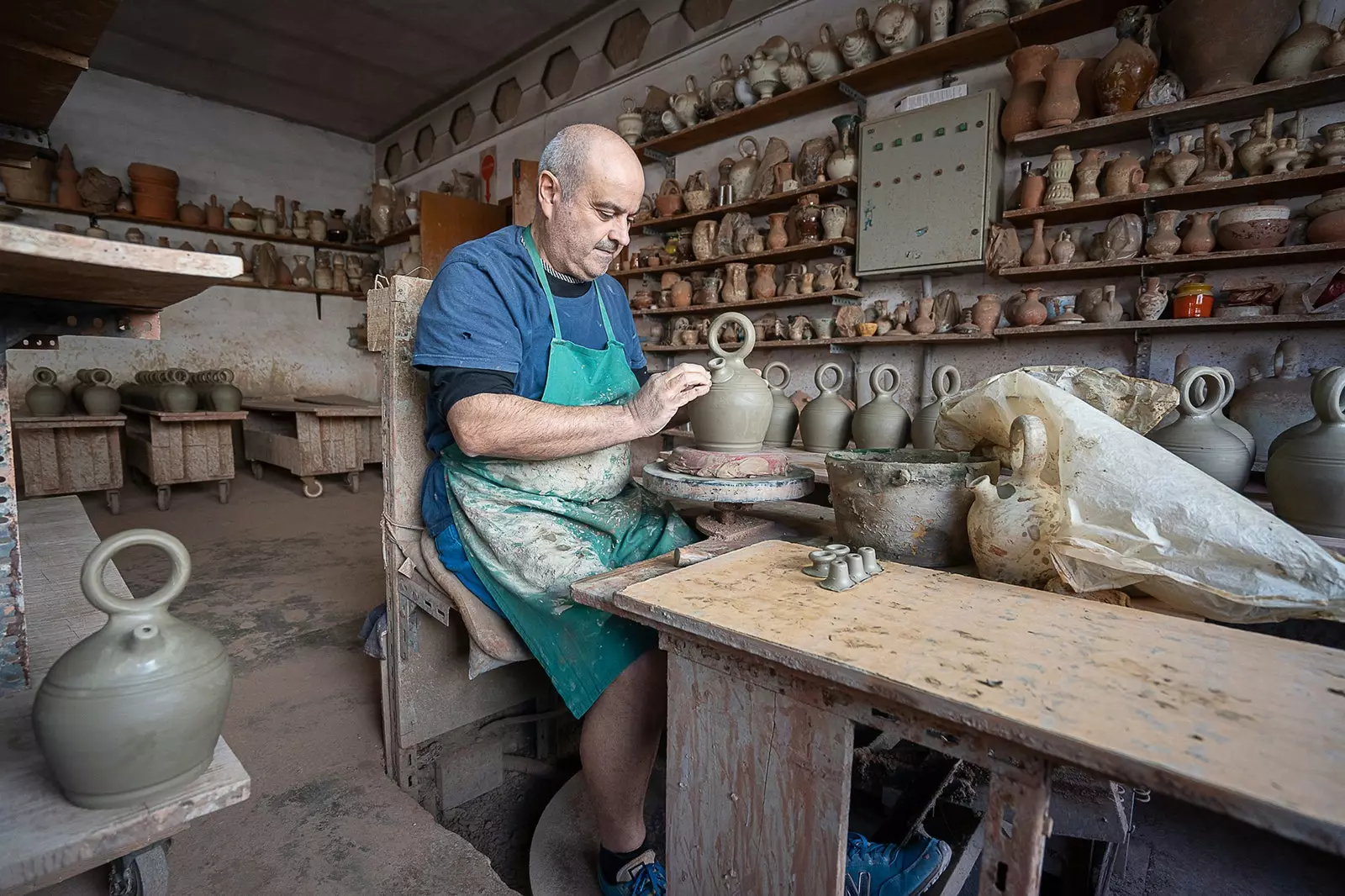
La Navà, National Ceramic Award 2018, whose Enfangart project offers guided tours, courses and experiences to be a potter for a day
TRADITION HAS BLUE EYES
At one end of the road that connects Agost with the Sierra del Maigmó lies a pottery workshop lost in time. A blue door indicates the entrance to an exterior patio sheltered by a bignonia dilated by cicadas. Emili Boix has blue eyes that distract the visitor and his Nike reveal the youthful spirit of a 71 year old man nurtured by the wisdom of these arid lands.
“If the world ends, we would all have to start making pots”, Emili tells with the conviction of someone who defends one of the oldest trades in the world. Boix was a professor at the University of Alicante, but after the death of his father he decided to take over the pottery business, fascinated by the trade: “Pottery links you to history and ancestors. Clay has some memory because it allows you to maintain traditions, but it also includes many other benefits: it transmits a passion for what you do, it does not harm nature and it reminds us that we have been a culture”.
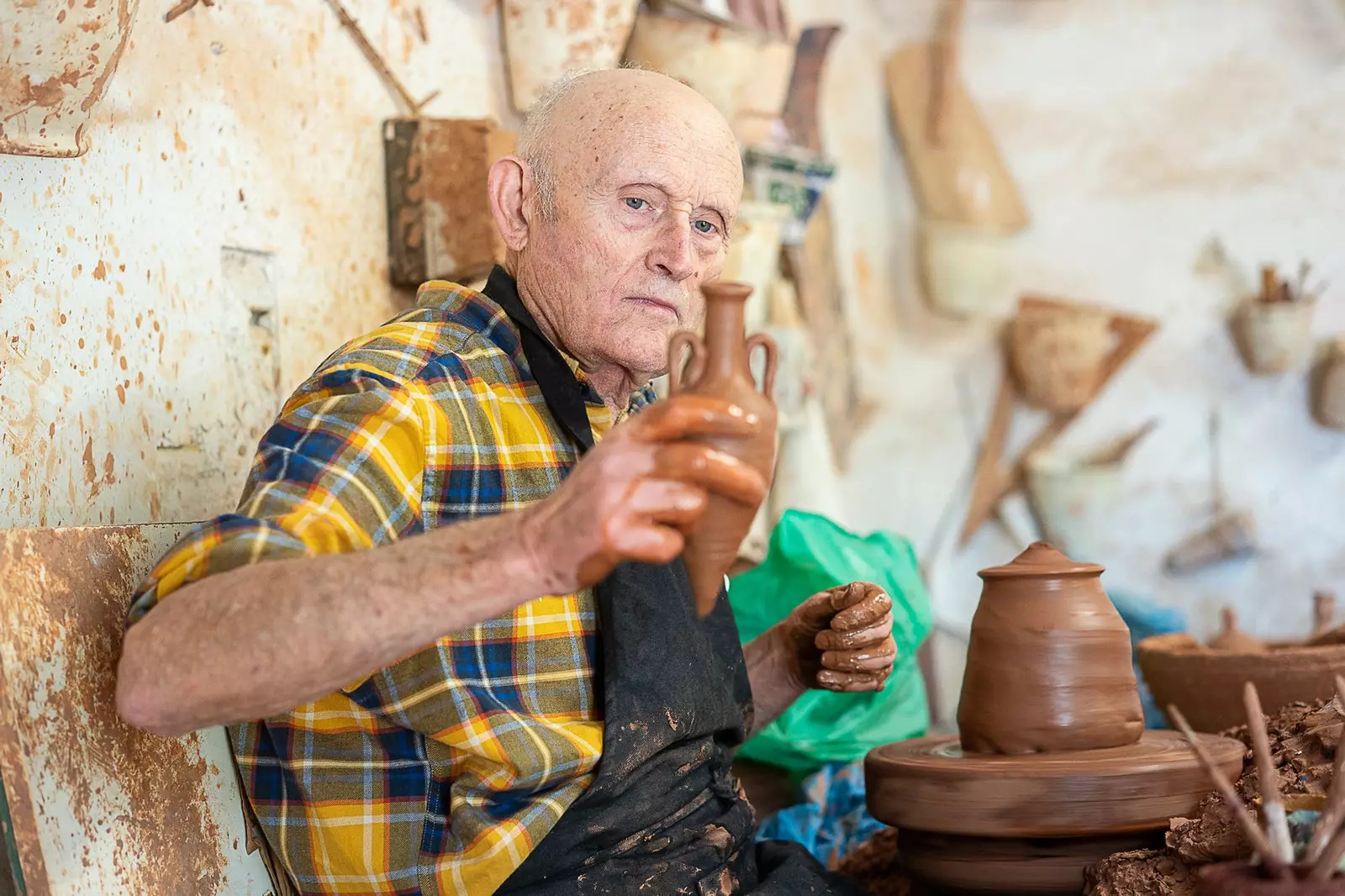
Emili Boix, tradition has blue eyes
Emili also emphasizes the link between this profession and the Mediterranean lifestyle: “Pottery drinks from a time when we worried about enjoying life. A quieter existence, in which my father closed at noon if the week had been good to go eat pieces of bread at Uncle Victoriano's fig tree or watch Valencian ball games. Sometimes I think that a Wall Street broker should come here to carry two pitchers of water up a mountain. He sure took all the stress out of her.”
Pottery is a perfect meter of time and its changes, but it also lends itself to innovation: “Technology can enslave you, but it can also be useful. I appreciate being able to change the engine on my lathe and that it makes my job easier, although it is true that we are at a time when technology and its excesses have deprived us of that feeling of full happiness”.
Regarding the future of the profession, Emili affirms that, despite having recently retired, he keeps thinking about projects and opening his workshop to any visitor: “Furthermore, my son Joanet lives in Germany and he is working on mud therapies thanks to the lathes”. There are arts capable of perpetuating memory through new initiatives and actions.
WHERE MEMORY PLAYS
Emili knew my grandparents. In fact, he lived on our same Pottery street today called Carrer de les Cantereries where life hasn't changed that much. A neighbor is still sweeping the portal and the palm trees have grown in the back room of the chromatic Hermitage of Santa Justa and Rufina, patron saints of potters.
In the streets that surround the hill of Castell de Agost the last closed workshops lie and the hill curls into colorful houses, flowery patios and the Hermitage of Sant Pere, watchman of an army of roofs full of messy tiles and hanging clothes.
Maybe you still have time to take a coke to the shovel, the gourmet fantasy that prevails here in the form of 'pizzas' with eggs, bacon, sausages and other delicacies. Or one cod boretta; maybe some good ones migas to combine with the Vinalopó table grape that was never missing in our dinners. I walk down the hill, wondering if this is 2021 or 1999 until I reach the laundry room where I spent so many summers with my grandmother before she forgot my name.
More than twenty years later, everything remains the same, even the old marks from the pitchers that we rubbed against every July; the brands that remind you of where you come from and what we were.
Emily has given me the small sculpture of a peona that I hold in front of a laundry room in which to feel like a child again. Nothing changes, it only transforms. Perhaps pottery never ceased to be the art of playing with memory.
